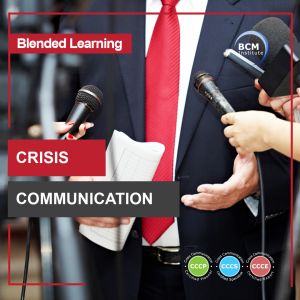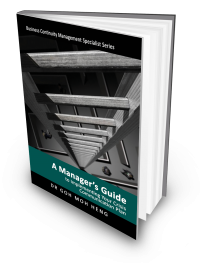Event
1. An Event is a pre-announced large-scale activity that would lead to a disaster or crisis. The stakeholders are made aware by a set of announcements or early indicators.

Related Terms: Crisis, Incident, Disaster, Emergency, Disruptive Events

| |||||||||||||||||||||||||||||
2. Occurrence or change of a particular set of circumstances.

Notes (1) : An event can be one or more occurrences, and can have several causes.
Notes (2) : An event can consist of something not happening.
Notes (3) : An event can sometimes be referred to as an "incident" or "accident".
Notes (4) : An event without consequences may also be referred to as a "near miss", "incident", "near hit", "close call".
(Source ISO/IEC Guide 73)
(Source: ISO 22301:2012 – Societal Security – Business Continuity Management Systems - Requirements) - clause 3.17
| 3. Occurrence or change of a particular set of circumstances.
Notes (1) : The event can be certain or uncertain. Notes (2) : The event can be a single occurrence or a series of occurrences. Notes (3) : The probability associated with the event can be estimated for a given period of time. (Source: ISO 22399:2007 – Societal Security - Guideline for Incident Preparedness and Operational Continuity Management) - clause 3.8 |
4. Occurrence or change of a particular set of circumstances.
Notes (1) : An event can be one or more occurrences, and can have several causes.
Notes (2) : An event can consist of something not happening.
Notes (3) : An event can sometimes be referred to as an “incident” or “accident”.
Notes (4) : An event without consequences (2.18) can also be referred to as a “near miss”, “incident”, “near hit” or “close call”.
[ISO Guide 73:2009, definition 3.5.1.3]
(Source: ISO 31000:2009 – Risk Management — Principles and Guidelines) - clause 2.17
| 5. Any occurrence that may lead to a business continuity incident.
(Source: Business Continuity Institute - BCI) |
6. Occurrence of a particular set of circumstances.
(Source: Australia. A Practitioner's Guide to Business Continuity Management HB292 - 2006 )
| 7. Occurrence or change of a particular set of circumstances.
NOTES:
or ‘dangerous occurrence’. (Source: AS/NZS 5050.1 Australian and New Zealand Standards for business continuity management. Part 1: Business continuity management system specification) |
8. Occurrence or change of a particular set of circumstances.
NOTES:
- Nature, likelihood, and consequence of an event can not be fully knowable.
- An event can be one or more occurrences, and can have several causes.
- Likelihood associated with the event can be determined.
- An event can consist of a non occurrence of one or more circumstances.
- An event with a consequence is sometimes referred to as ‘incident’.
- An event where no loss occurs may also be referred to as a ‘near miss’, ‘near hit’, ‘close call’
or ‘dangerous occurrence’.
(Source: AS/NZS 5050.2 Australian and New Zealand Standards for business continuity management.
Part 2: Business continuity management practice standard)
| 9. Any occurrence that may lead to a Business Continuity incident.
(Source: ENISA - the European Network and Information Security Agency. BCM & Resilience Glossary) |
